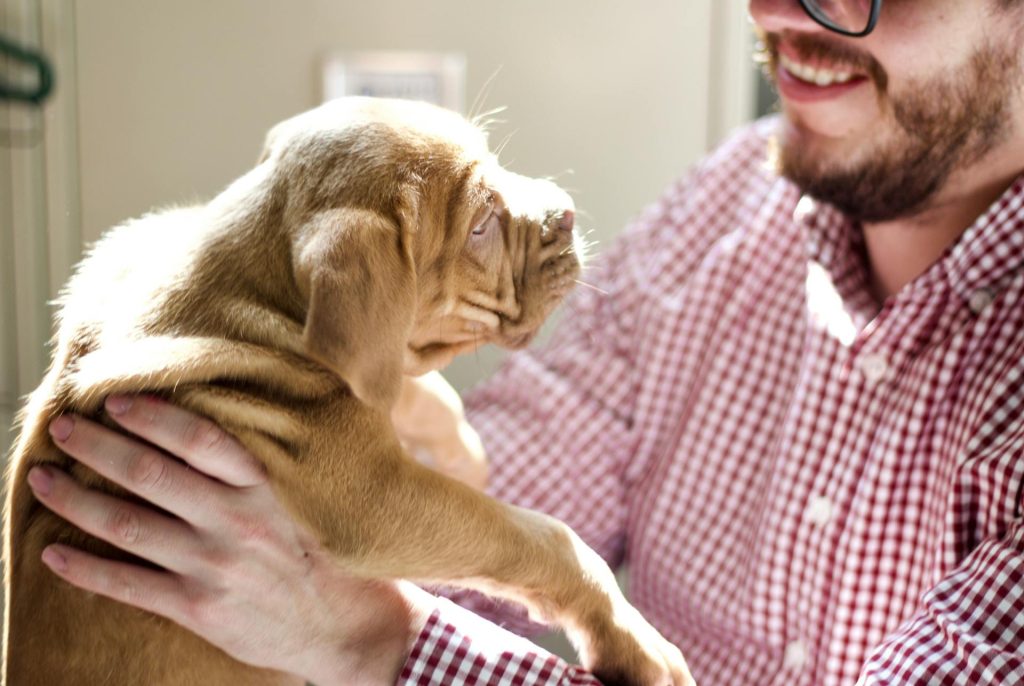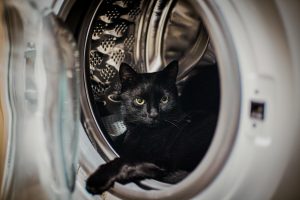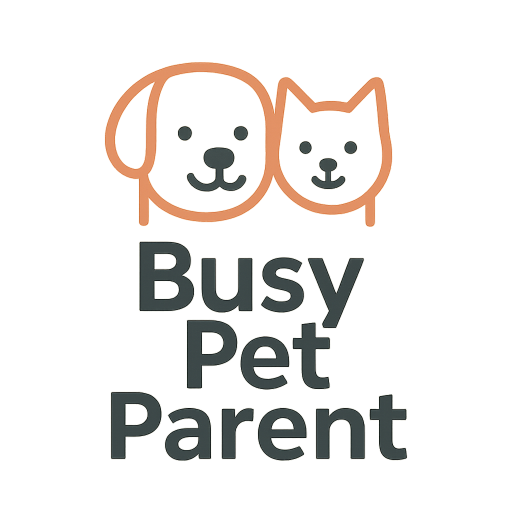
15 Powerful Ways to Prepare Your Apartment for a New Puppy (Without Overwhelm)
Bringing home a new puppy is one of the most exciting (and chaotic) moments for any pet parent. But when you live in an apartment, the stakes are a little different. You don’t have a backyard for accidents, space is limited, and noise complaints can quickly ruin your joy. That’s why it's essential to prepare your apartment for a new puppy with both care and strategy—so your new best friend has a safe, happy start, and you stay sane during the adjustment period.
Whether you're a first-time dog owner or a seasoned pet parent making the move to apartment life, these tips will help you puppy-proof your space, streamline daily routines, and avoid common mistakes. From crate setup to potty zones, gear storage to training prep—we’ve got everything covered.
1. Designate a Puppy-Safe Zone Before Arrival
Puppies thrive when they feel secure—and that starts with a space they can call their own. Before your puppy steps paw into your apartment, section off a safe zone where they can eat, nap, play, and relax. This area helps contain early potty accidents, reduces overwhelm, and teaches your puppy that home has boundaries.
A corner of your living room or bedroom works well. Use a playpen, baby gates, or furniture to create a small enclosure with soft bedding, food/water bowls, and a few chew-safe toys. As they grow, you can expand their access—without giving free rein from day one. If you're not sure how to balance space with structure, our post on crate training in apartments walks you through setting up a calm environment for your new arrival.
2. Puppy-Proof All Cords, Cables, and Outlets
Curious puppies will chew anything within reach—including electrical cords. In apartments where outlets and electronics are often close to the ground, this becomes a major safety risk. Before your puppy arrives, do a room-by-room check of every visible cord and plug.
Use cord organizers, cable sleeves, or adhesive clips to secure loose wires against the wall. For high-risk areas like under desks or behind entertainment units, block access entirely using storage bins or furniture. Outlet covers are also essential, especially if your puppy tends to lick or paw at wall sockets.
For more electrical safety and pet-proofing advice, don’t miss our detailed guide on pet-proofing an apartment. Early prep now can prevent costly (and dangerous) accidents later.
3. Choose a Designated Potty Area Early (and Train Around It)
One of the most important steps to prepare your apartment for a new puppy is establishing a consistent potty plan. Accidents are inevitable, but you can drastically reduce them by deciding on your puppy’s potty zone ahead of time. Whether you use pee pads, a faux-grass balcony patch, or schedule frequent outside breaks—consistency is key.
Pick a spot your puppy can reach quickly and easily. Always guide them to the same location after naps, meals, and playtime. If you live several floors up, indoor options may be necessary during the early months. Use clear verbal cues and praise every success.
Need help creating a schedule that works in a small space? Our full breakdown on potty training apartment dogs has you covered with realistic routines, supply tips, and mess prevention strategies.
4. Stock Up on Cleaning Supplies Before You Need Them
Every new puppy comes with accidents—it’s not a matter of if, but when. Rather than scrambling after a mess, make sure your apartment is fully stocked with puppy-safe cleaning products from day one. Enzyme cleaners are your best friend for eliminating odors and preventing repeat accidents in the same spot.
Keep supplies within easy reach of your potty zone and food area. Include paper towels, a scrub brush, washable rags, and a non-toxic disinfectant. Having a designated bin or caddy just for pet messes helps keep your routine quick and low-stress.
For more tips on safe, effective cleaning with pets in tight spaces, visit our full guide on pet-safe cleaning tips for apartments. A clean home isn’t just about hygiene—it helps your training go smoother too.
5. Create a Puppy Feeding Station That Minimizes Mess
Puppies are enthusiastic eaters—and that usually means spills. To keep your apartment tidy and your pup’s meals predictable, set up a small feeding station in a low-traffic area. Use a washable mat under bowls to catch drips and crumbs, and keep food containers sealed nearby for easy access.
Try to feed your puppy in the same spot every day. This builds structure into their routine and reduces the likelihood of wandering messes. For apartments with limited space, a narrow hallway, kitchen corner, or laundry nook can work well. Bonus points if it’s near your water refill source.
Want to upgrade your gear setup? Check out our full post on pet organization hacks for small spaces—perfect for keeping your puppy supplies neat, hidden, and accessible.
6. Secure Trash, Pantry, and Toxic Household Items
Puppies explore the world with their mouths—and that curiosity can get dangerous fast. One of the most overlooked steps to prepare your apartment for a new puppy is locking down anything remotely edible or chewable that could make them sick. That includes trash bins, cleaning supplies, pantry items, and personal care products.
Use childproof latches on low cabinets and heavy lids on all trash bins. Keep bathroom doors closed and store medications high up. If your puppy is especially food-motivated, avoid leaving snacks or fruit bowls on low tables or counters. You’d be surprised how fast they can climb or jump!
For a more detailed checklist of safety steps room by room, explore our comprehensive guide on pet safety tips for apartment living.
7. Choose Easy-Clean Rugs, Bedding, and Blankets
Your puppy is going to have accidents, chew mishaps, and plenty of muddy paws—so don’t invest in luxury textiles just yet. Stick to machine-washable rugs, removable covers on pet beds, and inexpensive throw blankets that can take a beating during training. This reduces stress for you and keeps your apartment from smelling like a kennel.
Avoid materials that trap odor, stain easily, or can’t be cleaned with pet-safe detergent. Opt for low-pile rugs with rubber backings that stay put on hard floors. And when it comes to bedding, choose something cozy but functional—puppies don’t need designer cushions, just comfort and security.
Our guide on pet-safe apartment cleaning includes laundry strategies, odor control methods, and materials to avoid in the first year.
8. Set Up a Daily Routine From Day One
Puppies crave predictability. In an apartment where stimulation is high and outdoor access can be limited, structure becomes your best friend. The earlier you establish a routine—feeding times, potty breaks, nap windows, and training blocks—the more confident and calm your puppy will become.
Write your daily schedule down if it helps. Anchor the day around meals and sleep first, then weave in short enrichment activities and potty sessions. Stick to similar time windows even on weekends, especially during those early weeks when habits are forming fast.
If you’re unsure how to balance everything in a small space, this guide on apartment dog routines gives a full example day plus troubleshooting tips for busy schedules.
9. Schedule a Vet Visit and Puppy Wellness Plan in Advance
Don’t wait until there’s a problem to find a vet. Ideally, you should have a wellness appointment booked for your new puppy within the first week of bringing them home. This early visit establishes a baseline, gets your questions answered, and helps you stay on track with vaccines, parasite prevention, and nutrition.
Look for clinics near your apartment with experience in puppy care and good availability for follow-ups. You’ll also want to ask about emergency protocols, grooming advice, and socialization tips for city living. Some clinics offer wellness plans that bundle care at a discount.
For a detailed look at what to expect in those first visits, we recommend the Yorkville Animal Hospital Puppy Wellness Guide. It’s packed with advice for every milestone, including dental checks, microchipping, and early screenings.
10. Invest in High-Quality Chew Toys (and Rotate Them)
Puppies have an intense need to chew, especially during teething—and your apartment furniture, shoes, and cords are all fair game without the right alternatives. To redirect this urge, make sure you have a small stash of safe, durable chew toys ready from day one. They’ll not only protect your belongings but also provide mental stimulation and stress relief.
Start with 3–5 toys made of different materials: rubber, fabric, and edible chews. Rotate them every few days to keep interest high. Avoid toys with small detachable parts or toxic ingredients. Supervise early sessions to see what your puppy prefers and to make sure they're chewing safely.
For more enrichment ideas that won’t clutter a small space, explore our post on puppy training tips for apartment dwellers. It includes beginner toy tips, crate games, and gentle discipline techniques for curious pups.
11. Train Early with Positive Reinforcement (Even Before They “Know Anything”)
One of the biggest mistakes new apartment dog owners make is waiting too long to begin training. Puppies are capable of learning simple cues from 8 weeks old—and the earlier you start, the smoother your long-term behavior journey will be. Focus on short, positive sessions and reward calm behavior constantly.
Start with basics like “sit,” “come,” “leave it,” and name recognition. Use a clicker or marker word, pair it with treats, and keep sessions under 3 minutes. Most importantly, reinforce calmness indoors. A settled puppy is key to keeping peace with neighbors.
Not sure where to begin? Our post on crate training in apartments includes tips that overlap perfectly with early obedience—like rewarding quiet time and preventing over-arousal.
12. Make Your Balcony (or Window) Safe for Supervised Exploration
If you have a balcony or large windows with a ledge, these areas can be a great source of enrichment—but only if they’re 100% puppy-safe. Before letting your pup explore, check for loose railings, wide gaps, sharp edges, or anything they could climb or fall through.
Use a balcony safety net, privacy panels, or pet-proof barrier mesh to enclose railings. Never leave your puppy unsupervised outdoors, even for a minute. Indoors, keep windows locked or secured with screens. If you’re short on space, placing a small pet bed near a low windowsill can simulate outdoor watching.
For more safety solutions and visual upgrades that work in small apartments, see our guide on pet-proofing balconies for renters. It’s ideal for city dogs who need a sniff of fresh air without the risks.
13. Set Up a Puppy Cam or Baby Monitor for Peace of Mind
Separation anxiety is common in apartment-raised puppies, especially when you have to step out for work or errands. Installing a simple pet camera or repurposing a baby monitor can help you check in remotely—and give you peace of mind that your puppy isn’t barking, pacing, or getting into trouble.
Many affordable options now include two-way audio, treat dispensers, and motion alerts. This isn’t just about spying—it’s about reinforcing good behavior from a distance and avoiding complaints from neighbors. Knowing your pup is napping instead of crying makes the transition easier for everyone.
If you're working through barking or anxiety, check out our behavioral tips inside this thunderstorm anxiety guide. Many of the same strategies apply to solo apartment time.
14. Prepare Visitors and Roommates for Puppy Protocols
You might have your home fully puppy-proofed—but it only works if everyone else is on the same page. Before you bring your new pup home, talk to roommates, family, or friends about rules like not feeding table scraps, closing doors, and respecting nap time. These conversations prevent confusion and reinforce consistency.
Consider leaving a short printed checklist or sticky note on the fridge with reminders. If you host guests often, introduce them slowly and don’t force interaction. Let the puppy approach when they’re ready, and reward calm behavior around new people.
Many of these boundaries also help prevent accidents and set the tone for lifelong habits. For more transition tips, especially if you're balancing multiple people or pets, refer to our guide on staying organized with pets in tight quarters.
15. Take Time to Bond—Not Just Manage
In the flurry of house training, gear shopping, and vet visits, it’s easy to forget what matters most: building a loving bond. Puppies don’t just need structure—they need comfort, touch, attention, and connection. Even 5–10 minutes of calm cuddle time on the floor each day can deepen your relationship and ease their anxiety.
Use gentle brushing sessions, soft voice reassurance, or treat-based games that promote eye contact and trust. This early bonding period shapes how your dog sees you for the rest of their life. And in an apartment where physical freedom is limited, emotional closeness becomes even more essential.
For enrichment ideas that encourage bonding and calm behavior, check out our list of indoor games for dogs—perfect for small spaces and new puppy energy.
Final Thoughts
Welcoming a puppy into your apartment is a big moment—filled with excitement, challenges, and a whole lot of learning. But with just a little prep, you can set your new pup up for success from day one. Whether it’s puppy-proofing your outlets, creating cozy routines, or planning ahead for wellness care, every step you take now will pay off in peace of mind later.
Remember: this isn’t about perfection. It’s about creating a safe, stable, and loving home that works for both you and your puppy. And that journey begins long before the first tail wag at your front door.
Frequently Asked Questions
How do I prepare my apartment for a new puppy?
Start by creating a designated safe zone, puppy-proofing cords and furniture, setting up a potty area, and stocking cleaning supplies. Focus on structure, safety, and calmness to ease the transition.
What puppy supplies do I need in an apartment?
You’ll need food and water bowls, a crate or playpen, chew toys, a leash and harness, potty pads or grass mats, cleaning products, and a few cozy blankets. Start with essentials and upgrade as needed.
Can you raise a puppy in a small apartment?
Absolutely. With the right setup, routine, and mental enrichment, puppies can thrive in apartments. The key is consistency, supervision, and creative use of space to keep them safe and happy.
What’s the best way to potty train a puppy in an apartment?
Pick a specific potty zone—indoors or outdoors—and use it consistently. Take your puppy there frequently (especially after eating, sleeping, or playing), reward success, and clean up accidents thoroughly.
How can I prevent my puppy from barking in the apartment?
Keep your puppy mentally engaged with chew toys, crate training, and short training sessions. Reinforce calm behavior and avoid leaving them alone for long periods early on. A pet camera can help you monitor patterns.

Join the Busy Pet Parent Newsletter!
Get easy routines, time-saving tips, and the latest gear reviews—delivered straight to your inbox.
Perfect for busy pet owners, apartment dwellers, and anyone who wants a happy, healthy companion (without the stress).
Exclusive guides & checklists
Product recommendations & deals
No spam—unsubscribe anytime!




